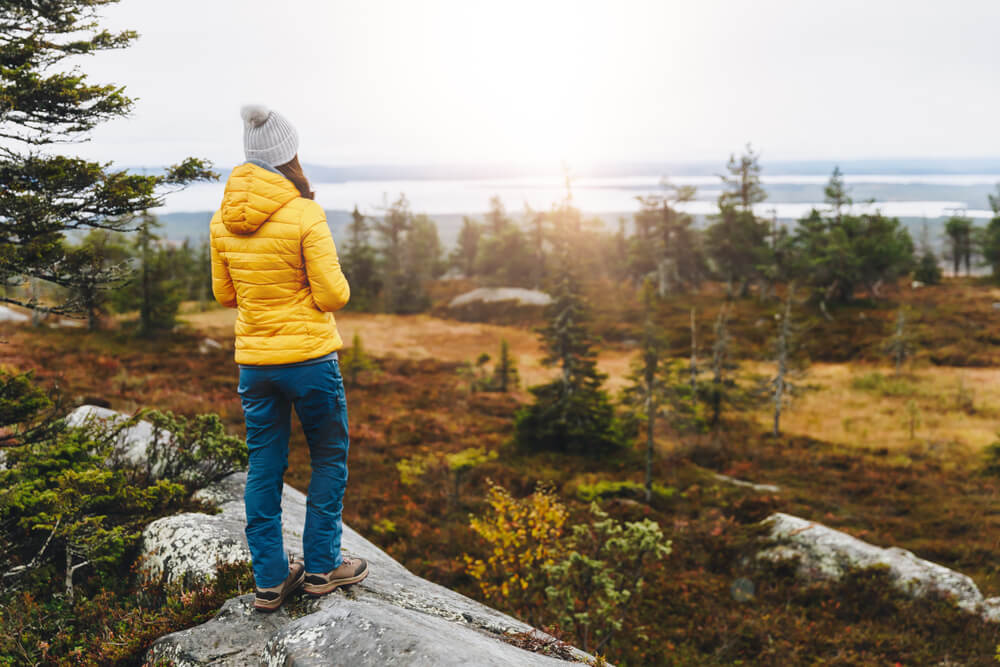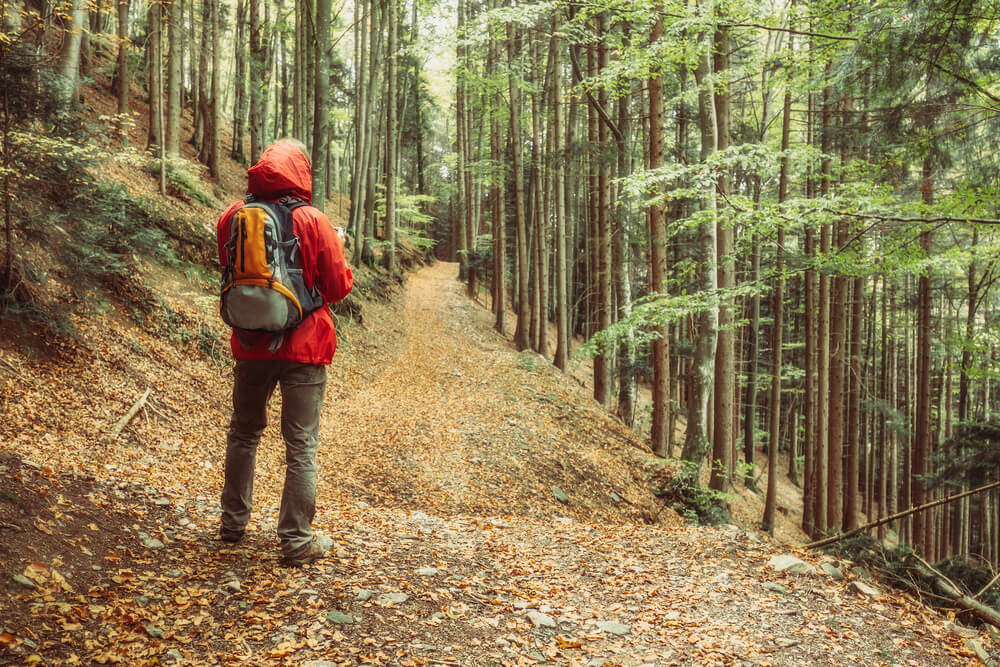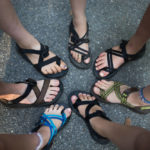A winter hike can be a fun, invigorating way to enjoy the outdoors. The trails are often less crowded than at other times of the year, the bugs have died off or gone into hibernation, and the humidity has gone down significantly.
However, colder weather brings a requisite change in gear. It's time to break out the base layers, fleece-lined gloves, and wool socks. Most importantly, it's time to figure out how you want to keep your torso warm. It’s a showdown between the vest vs jacket hiking.
More...
Table of Contents
Vest or Jacket: Which Is Best for Hiking?
In many cases, a vest is the better choice for hiking. Vests offer more freedom of movement, are easy to pack down, and provide a nice balance if the weather is hovering right between cold and temperate.
That said, jackets have their place, too, and both have their pros and cons. The one you choose will depend mainly on what you plan to do while hiking.

Keep reading to learn a bit more about which option might be best for you.
Vest
The most important part about your hiking gear is keeping your core warm, and you'd be surprised to find out just how warm a vest can keep you. If your chest and torso are warm, your internal organs will receive the most blood flow.
Vests are a great choice because they're lightweight, aren't as rigid as most jackets, and come in varying warmth levels. They're also ideal if you think you'll need a lot of freedom of movement when you hike.
For example, if you're scrambling on rocks or ruins, being able to move your arms freely will make it easier to keep your balance and maneuver your arms as needed. Your core will stay warm, but you'll still be able to do the things you set out to do.
One of the main things a vest doesn't offer is total protection from water. If it rains, the vest may keep water off your core, but it won't do a thing to keep your arms dry. For that reason, you should always pack a poncho or lightweight rain jacket on trips where you might meet some precipitation.
In addition, a vest's lack of arms allows air to seep in through the armholes, which can lead to some discomfort if the day turns too cold.
Jacket
Without question, jackets are the warmer option over vests. Not only do jackets completely cover your upper body, but they also prevent cold air from seeping in around your armpits.
Although jackets may not give you the same range of motion as vests, they offer other benefits. In addition to keeping your torso and arms toasty warm, a jacket can also provide a solid barrier against the wind.
If you want a waterproof outer layer, a jacket is an excellent choice because it protects your entire upper body instead of just your torso. If you're anticipating rain, a jacket will be the best way to prevent hypothermia.
The main thing jackets have working against them is their portability. A vest is easy to pack down into your bag. On the other hand, a jacket is more difficult to pack down because they're usually more rigid, and the arms add a lot of bulk.

What Should You Wear Hiking?
A jacket or vest is just one aspect of a proper hiking outfit. To get the most out of your hiking trip, you should be comfortable but also safe. This requires specific gear and well-chosen layers.
Footwear
Your footwear consists of your boots and socks. Both have specific requirements to meet.
Boots
Your boots will make or break your hiking experience. Ill-fitting shoes can cause blisters, cramps, or instability, which can lead to twisted ankles.
When choosing boots, find a waterproof pair that offers solid ankle support. In addition, make sure the boots you buy are appropriate for your climate. You can purchase all-season boots, but in some cases, a separate pair for snow or cold weather might be ideal.
The most important thing about hiking boots is to try them on and consider what you'll use them for. Hiking boots serve a much different purpose than your average pair of shoes. Your feet will require more space to move, which often means going up half a size.
It also doesn't hurt to add a package of moleskin to your pack just in case you do end up with a blister or two.
Socks
Socks are almost as important as boots. You'll need to choose a pair with the right height, cushioning, snugness, and fabric to get the best protection and comfort.
For example, if you've opted for an 8-inch boot, you should wear socks that come up a good nine inches to prevent chafing. And, if the weather is cold, choose a wool sock that adds an extra layer of insulation.
Also, when you pack your bag, always pack a backup pair of socks. One slip into a creek can ruin your day if you don't have a spare pair to replace your wet ones.
Base Layer
Without question, if you're hiking in cold weather, you'll need a base layer. Period.
Your base layer is the first layer of gear in your hiking outfit. Its purpose is to help retain heat and can come in the form of long underwear, leggings, a fitted shirt, or other pants-shirt combinations.
The most important thing to remember about your base layer is that it needs to be fitted. The closer the fabric is to your skin, the more effective it will be at keeping a nice bubble of warmth around you.
Mid-Layers
Mid-layers will vary from one person to the next depending on climate and needs. For example, a hike in below-freezing temperatures may require one or two added layers between your base and outer layers.
The nice thing about mid-layers is that they're easy to choose. They help your base layer hold in warmth and provide more insulation from the elements, but you can get creative with what you wear.
For example, you could add a sweater or flannel shirt over your base layer to act as a good mid-layer. Or, if you anticipate temperatures that may drop below zero, you could add a second pair of thermal underwear in addition to a sweater or sweatshirt and an extra pair of socks.
Outer Layer
Your outer layer is your first line of defense against the elements, which is why you need to choose the right gear. It consists of your jacket or vest and pants.
We've already discussed the difference between jackets and vests. However, there are a few other requirements an outer layer should meet.
Bright
Your jacket or vest should say two things:
- "I'm not a deer."
- "I'm over here."
In other words, hiking is the one time when you absolutely don't want to blend into your surroundings.
You're sharing the woods with a lot of people when you take a hike. There are other hikers, of course, but now and then, you may come across hunters. Your jacket should be a vivid color, such as neon orange, bright blue, or red, so there will be no mistaking that you're a human and not prey.
In addition, if you get lost, and officials send out a search party, a bright color will make it easier to find you.
Waterproof
Wet gear can quickly turn a fun hike into a miserable one. This is especially true if the water-logged gear is your outer layer. Not only will it cause you to feel cold, but the water will also add weight, which can ultimately tire you out more quickly.
If you're in below-freezing temperatures, a wet jacket or pants can quickly lead to hypothermia, which is incredibly dangerous, especially if you're deep in the woods.
So, when choosing your brightly-colored outer layer, make sure it has a waterproof shell. This is especially true of pants since they can wick water up from the ground and take a long time to dry.
Cold-Weather Gear
There are additional pieces of cold-weather gear you can add to your hiking attire.
Gloves
A good pair of winter gloves or mittens should provide warmth, insulation, and flexibility. The need for flexibility is especially true if you'll be scrambling or using trekking poles.
Head Gear
If your body is clad in insulated gear, the heat only has one place to go–up. A wool beanie or balaclava can be the final touch to keeping as much warmth within your gear as possible.
Snowshoes
Hiking boots are ideal if you'll mainly be walking on the ground. However, if snow is in the forecast or already on the ground, snowshoes will help keep the snow from seeping into your boots.
The nice thing about snowshoes is that they're lightweight, so you can clip them to your pack and only add a few pounds to your base weight.
Conclusion
When it comes to hiking, whether you choose a jacket or vest really depends on your needs. In frigid temperatures or wet conditions, a jacket will offer better protection. However, if conditions are dry or you plan to hike in an area where temperatures won't dip too low, a vest will be more than sufficient.
- Are Merrell Shoes Good? – An Unbiased Review of Merrell Footwear - December 9, 2023
- Where Are Merrell Shoes Made? - December 9, 2023
- Camping in 40-degree Weather: Tips and Tricks - September 25, 2023


![Are Hammocks Better Than Beds? [Quick Answers & Questions] Are Hammocks Better Than Beds? [Quick Answers & Questions]](https://grandcircletrails.com/wp-content/uploads/2021/12/Are-Hammocks-Better-Than-Beds-1-150x150.jpg)
![How to Wash Patagonia Better Sweater? [5 Step Guide] How to Wash Patagonia Better Sweater? [5 Step Guide]](https://grandcircletrails.com/wp-content/uploads/2022/12/How-to-Wash-Patagonia-Better-Sweater-150x150.jpg)
![What is the Difference Between a Parka and a Jacket? [3 Differences Explained] What is the Difference Between a Parka and a Jacket? [3 Differences Explained]](https://grandcircletrails.com/wp-content/uploads/2021/11/Clothing-for-the-camping-trip-1-150x150.jpg)
![How to Wash Patagonia Down Jacket? [4 Step Guide] How to Wash Patagonia Down Jacket? [4 Step Guide]](https://grandcircletrails.com/wp-content/uploads/2022/01/How-to-Wash-Patagonia-Down-Jacket-150x150.jpg)
![How to Fluff Down Jacket? [Quick Tips For You] How to Fluff Down Jacket? [Quick Tips For You]](https://grandcircletrails.com/wp-content/uploads/2022/01/How-to-Fluff-Down-Jacket-1-150x150.jpg)